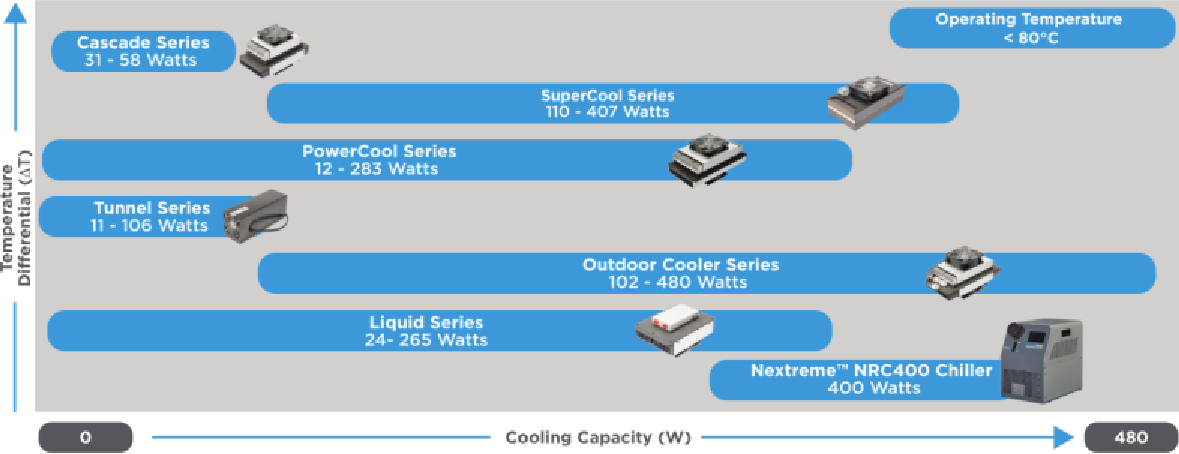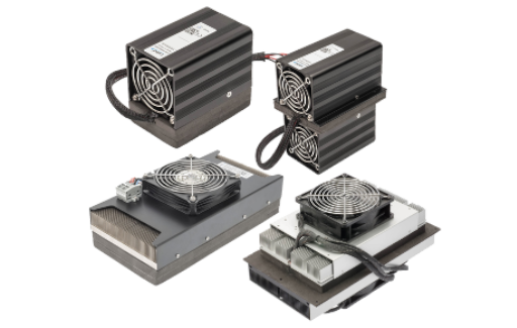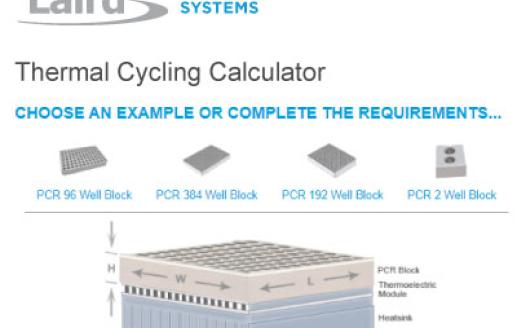Thermoelectric cooler assemblies (TEAs) offer benefits such as precise temperature control, compact size, quiet operation, and the absence of refrigerants or moving parts. Some may argue that they have limitations in terms of cooling capacity and efficiency compared to traditional refrigeration methods, however, we can demonstrate otherwise.
Laird Thermal Systems, with two decades of design and testing experience, offers standardized cooler assemblies in a wide range of cooling capacities, saving engineers time and reducing costs while optimizing product development. Initiating thermal design with a standard thermoelectric cooler assembly proves more efficient, cost-effective, and reliable ensuring enhanced product performance and longevity.
TEAs play a crucial role in cooling equipment in various applications, including medical diagnostics, analytical instrumentation, and outdoor battery enclosures. With a cooling capacity ranging from approximately 10 to 400 Watts, these assemblies efficiently dissipate heat through convection, conduction, or liquid cooling methods. Notably, TEAs boast environmentally friendly solid-state operation, eliminating the need for a compressor or CFC refrigerants.
In exploring our range of TEA offerings, understanding how to select the right assembly for your specific application is fundamental. Let's look into the features and considerations that guide this selection process.
For chambers and sample storage compartments are best used high-performance air conditioners from the SuperCool Series
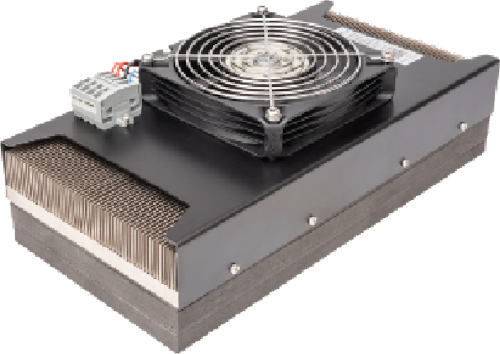 |
These units run on 24 VDC and provide cooling power ranging from 166W to 407W. They are specifically designed to regulate temperature in medical diagnostics chambers or sample storage compartments in analytical instrumentation. The unique design of these air conditioners features a highly efficient hot side heat dissipation mechanism, which outperforms conventional heat exchanger technologies. It can enhance cooling performance by up to 90%. The compact form factor utilizes custom thermoelectric modules for maximum cooling capacity and premium-grade fans to minimize noise. The series provides three heat transfer mechanism on the control side. Heat can be absorbed via liquid, conduction, or convection. With moisture-resistant gasket insulation, these units ensure that condensation cannot penetrate the thermoelectric cooler cavity. Additionally, we offer custom configurations upon request to meet specific requirements. |
Our Tunnel Series is ideal for the compact form factor requirements typically found in analytical instrumentation
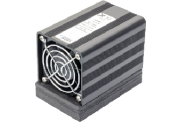 |
These TEAs excel in analytical equipment due to the crossflow technology, optimizing heat transfer through convection. Its compact design, powered by custom-designed thermoelectric modules, minimizes power consumption with a high coefficient of performance. Compared to traditional coolers, it requires fewer airflow paths. The Tunnel Series, available in standard and custom configurations, supports over 100 Watts of cooling capacity, making it suitable for various medical applications, ensuring dependable and efficient cooling. |
For medical diagnostic instruments, our most comprehensive PowerCool Series has been the choice
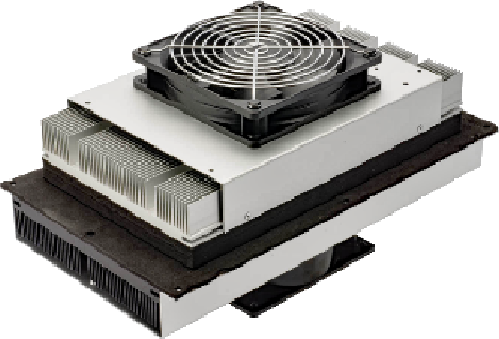 |
Designed for indoor use in medical, analytical, and industrial markets the PowerCool Series offers a comprehensive product lineup that spans various capacities, heat transfer mechanisms, and voltage ranges. With cooling capacities from 20 to 193 Watts, it employs impingement airflow on the hot side, and the cold side allows heat absorption through convection, conduction, or liquid means. Available in 12, 24, and 48 VDC configurations. |
Liquid Series are used where the TEA cannot be close to the source
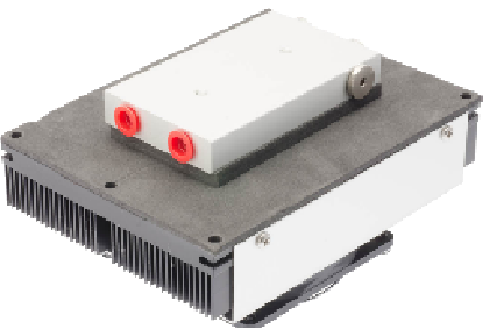 |
This solution becomes essential when the TEA needs to be positioned at a distance, allowing flexibility for its form factor, while ensuring proximity to the target device requiring temperature control, typically achieved through a cold plate. Designed for lasers and diagnostic equipment to cool or heat a coolant flowing through a liquid heat exchanger. Custom-designed thermoelectric coolers absorb heat on the cooling side, transferring it to the mating heat exchanger on the heat dissipation side. Dissipation can occur through convection, conduction, or liquid means. Turbulators enhance heat transfer, but for higher flow rates, they can be removed to reduce pressure drop. Made of anodized aluminum with corrosion-resistant plastic turbulators, custom configurations are available with a minimum order quantity. |
If you are looking for a thermal management solution for outdoor electronic cabinets and kiosks our Outdoor Coolers are the best fit
 |
The product series has been designed to pass harsh environmental demands such as earthquake resistance, salt fog, wind-driven rain, high-temperature exposure and dust. Our customers have verified the resilience of these features through rigorous testing, confirming their effectiveness. The cooling capacity ranges from 100 to 250 Watts. This product series is offered in 24 and 48 VDC configurations and is designed for outdoor use in the telecom and industrial markets. As a standard option, the products are also sold with bi-polar thermostatic control to heat and cool to specific temperature set points. |
Custom Options
When our standard products don’t meet your system design requirements, our team’s strong technology and application know-how drive the ability to develop precision cooling systems that meet specific customer demands. Every year we produce hundreds of custom solutions and have developed a streamlined process. See how we can accommodate your precise requirements https://lairdthermal.com/products/custom-solutions/custom-liquid-cooling-systems

It's essential to consider the specific requirements and constraints of your application, such as the heat load, ambient conditions, and space limitations. Additionally, a thorough thermal analysis should be conducted to ensure that the chosen thermoelectric assembly and convection cooling method meet the temperature control and efficiency needs of the application.
Reference perceptual map as a general guide as to where each product family fits with regards to products’ attributes. Click on the map.
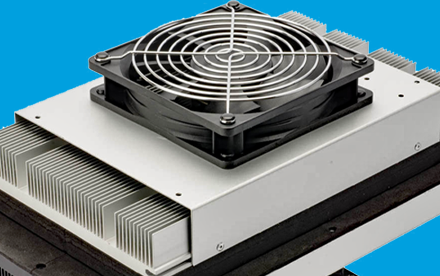
Related Products
Stay tuned for updates on thermal management industry regulations, new product releases, and innovative temperature control approaches with
LTS Thermal Solutions Spotlight:

